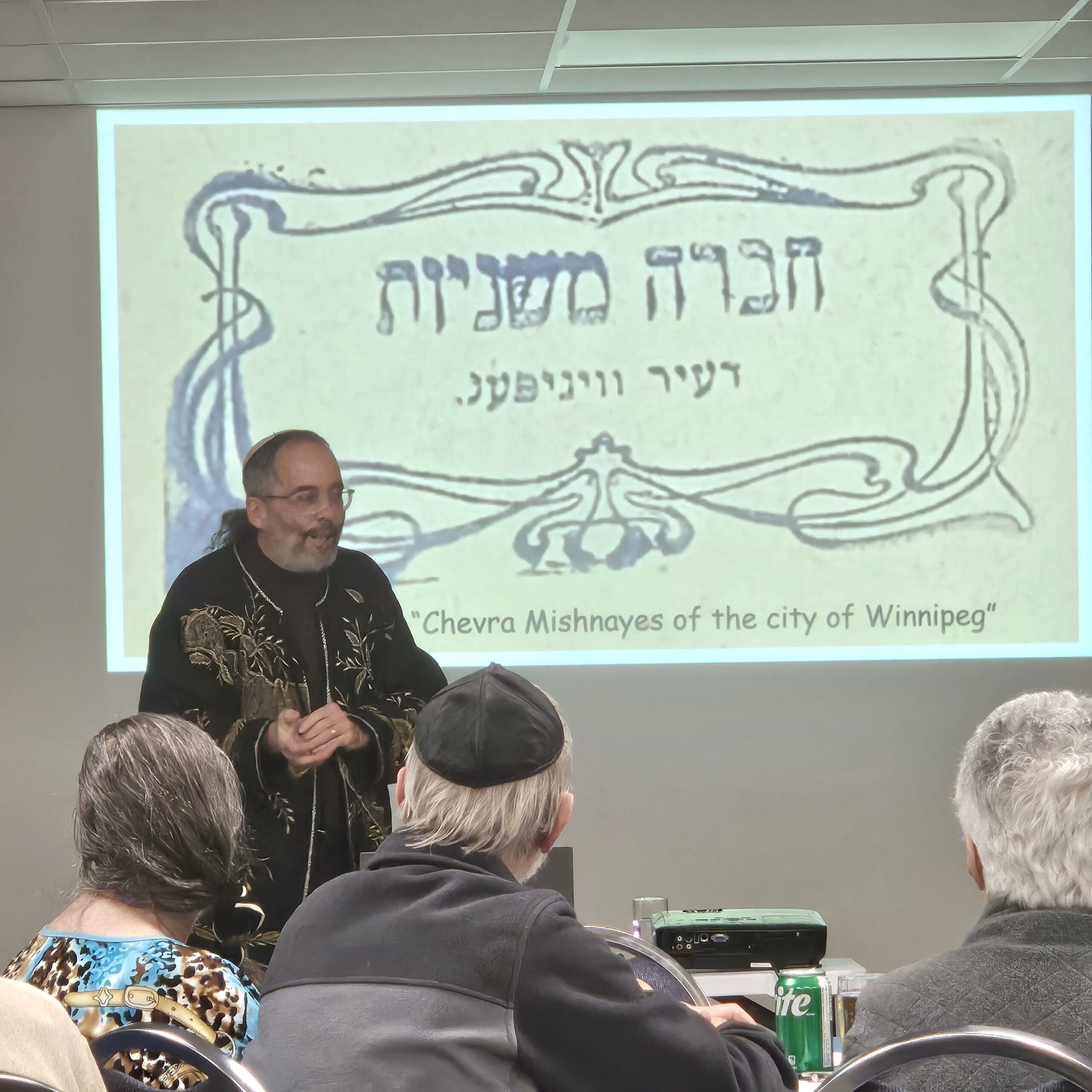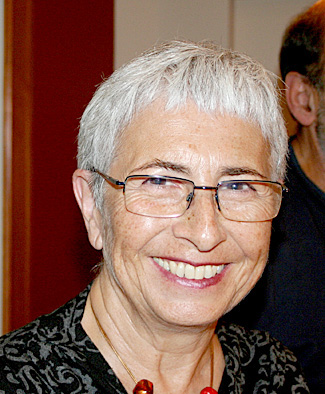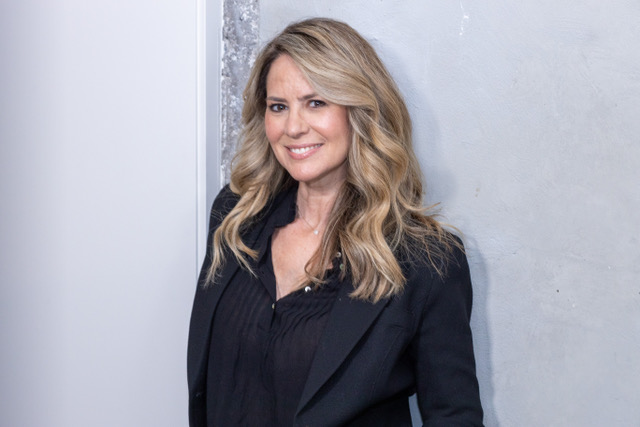Local News
Jewish scholar and bibliophile provides overview of hidden treasures hidden in Chevra Mishnayes congregation library

By MYRON LOVE Most shuls have a library of religious texts – or genizah (storage space) for discards – often books that were either donated specifically to the congregation or private collections dropped off at the synagogue after the original owners passed away.
On Sunday, December 8, the egalitarian Chvera Mishnayes synagogue in Garden City hosted a Lunch and Learning program, the highlight of which was an overview of the books housed at the Chevra Mishnayes – including Chumashim, machzorim, various assorted Talmudic tractates and commentaries on the Torah and Talmud. The program featured a presentation by Justin Jaron Lewis, during which the Yiddishist, bibliophile and professor of religion, revealed subtle features of some of the books, unveiling clues revealing when and where they were published, some direct connections to Winnipeg’s Jewish community and other interesting features.
The Chevra Mishnayes dates back to 1906. It has been at its present location on Jefferson Avenue since 1966. The former Ohel Jacob congregation merged with the Chevra Mishnayes in 1971.
“It’s amazing what people brought with them from the old country,” Lewis commented.
He cited as an example a book from the Chevra Mishnayes collection which was identified as having been bought from a Jewish books store in Toronto, but which had been printed in Poland. He pointed out other books that were published in the 19th century in cities such as Lublin, Vilna and Warsaw – all cities with large Jewish populations.
“The Warsaw edition had Cyrillic writing (based on the Russian-language alphabet) in it,” he noted. ‘Warsaw, Lublin and Vilna were all part of the Russian empire at the time.”
He added that a fourth book was published in Lviv in Ukraine which was part of the Austrian Empire in the 19th Century. “Because the Russians used to tax books that were printed in Russia but were to be taken out of the country, some claimed that their books were published in Austria or another country to avoid the tax,” Lewis explained.
Of interest also, for Jewish geography enthusiasts, Lewis noted, were books with the owners’ names written in them. One book belonged to the family of the well known comedian David Steinberg.
In a second book, Grade 9 Talmud Torah student Israel Pudavick had written his name.
There were other books originally from the collections of a shoichet named B.M Yahweis and one Rev. Martin Weisman.
There are religious commentaries in the Chevra Mishnayes collection penned over the years by Winnipeg rabbis such as Rabbi Y. H. Horowitz, Rabbi Meyer Schwartzman, Rabbi Shmuel Polonsky and one Rabbi Zorach Diskin – who lived in Winnipeg in the early 1900s.
“Some of the books offer a glimpse into Jewish history,” Lewis pointed out. There is one, published in 1865 in Warsaw, which he pointed out, includes a paean to Jewish life in Russia.
Censorship was strict in Russia, he explained. You had to satisfy the censors.
Lewis pointed out that trying to figure out the date of printing for some of the books can be challenging. In some cases, he noted, the book may be a copy – and the copyright date may be the date of the publication of the original. In other cases the date is written in Hebrew letters – leaving researchers to have to translate the letters to their numerical equivalent. What was thought to be the oldest book in the collection, for example, and which was originally estimated to date back to 1819, on further study was determined to be published in 1918.
Lewis also delved into the artwork in some of the books. With the Jewish injunction against recreating human images or those of angels or heavenly bodies, one book in the collection does have a scene where angels are watching as Moses hold the ten commandments and light is streaming from his head.
Another has a scene with Moses and Aaron opposite each other with lions overhead and Roman numerals also in the picture – an example, Lewis suggested of cross cultural influences.
Other popular scenes include the hands of the Cohen doing the priestly blessing The print design and layout can also offer opportunity for artistic flair.
Lewis further note that some of the machzorim have prayers inserrted in Yiddish – for instance, asking for good health – or a good life – or a prayer for one who is ill.
Incidentally, for readers with older Yiddish books at home who are considering trying to find a new home for them, Lewis is one of a handful of Winnipeggers who are collecting Yiddish books for transfer to the Yiddish Book centre in Amherst, Massachusetts.
The book centre,, he reports, is dedicated to finding good homes for such books in university libraries, or the homes of other scholars or other private homes. “A lot of younger people,” he said, “are rediscovering Yiddish and writing songs and poems in Yiddish.”
As to the Chevra Mishnayes’ library, Lewis observed that, as is the case with many other modern shuls, there has not been much interest in more recent years in studying Talmud and Torah.
“Some of the older books are crumbling,” he reported. “Perhaps we should form a committee to cull some of the books that we don’t need and look into ways to better preserve the remainder.
Readers with Yiddish books they no longer want can contact Justin lewis at justin_lewis@umaniotoba.ca
Local News
Newly announced Vivian Silver Centre for Shared Society to further former Winnipegger’s lifelong efforts to foster Jewish-Arab co-operation in Israel

By MYRON LOVE Vivian Silver (oleh Hashalom) devoted her life to working toward dialogue and collaboration between Arabs and Jews in Israel. The culmination of her efforts was the Arab-Jewish Center for Empowerment, Equality, and Cooperation – Negev Institute for Strategies of Peace and Economic Development (AJEEC-NISPED), which she co-founded 25 year ago with her sister peace activist, Dr. Amal Elsana Ahl’jooj.
Tragically, Vivian was of the 1,200 Israeli Jews, Bedouin and foreign farm workers who were slaughtered during the Hamas-led pogrom of October 7, 2023.
Last month, AJEEC-NISPED announced plans to create the Vivian Silver Center for Shared Society in her memory – a new national hub for Jewish-Israeli Arab collaboration and social innovation in Be’er Sheva – backed by an initial $1 million donation from UJA-Federation of New York, along with support from the Meyerhoff Foundation, the Gilbert Foundation, and other philanthropic partners committed to strengthening shared society in Israel.
“It’s a great honor and a beautiful gesture,” comments Vivian’s son, Yonatan Zeigen, “and I hope it will be a central building for civil society, both in the physical sense, that it will become a substantial home for the organization and for other initiatives that will use the spaced and also symbolically, as a beacon for this kind of work in the specific location in the Negev.”
As this writer noted n an article earlier this year in relation to the announcement of the launch of the Vivian Silver Impact Award by the New Israel Fund (NIF) – of which she was a long time board member, and which was developed in conjunction with her sons, Yonatan and Chen), Vivian made aliyah in 1974. She first went to Israel in 1968 – to spend her second year at university abroad at the Hebrew University of Jerusalem, studying psychology and English literature.
In an article she wrote in 2018 in a publication called ”Women Wage Peace,” she related that during her final year at the University of Manitoba, she was among the founders of the Student Zionist Alliance on campus and was invited to its national conference in Montreal. There she met activists in the Habonim youth movement who planned on making aliyah and re-establishing Kibbutz Gezer. The day she wrote her last university exam, she boarded a flight to New York to join the group.
She spent three years in New York, where she became involved in Jewish and Zionist causes, including the launch of the Jewish feminist movement in America.
“It was a life-changing period,” she recalled. “I came to understood that in addition to being a kibbutz member, I was destined to be a social change and peace activist.”
Vivian and her group made aliyah in 1974 and settled on Kibbutz Gezer. In 1981, she established the Department Promoting Gender Equality in the Kibbutz Movement. She moved to Kibbutz Be’eri near the Gaza border in 1990, along with her late husband, Lewis, and their two sons
In 1998, Vivian became the executive director of the Negev Institute for Strategies of Peace and Development in Beer Sheva, an NGO promoting human sustainable development, shared society between Jews and Arabs, and peace in the Middle East. Soon after, she was joined by Amal Elsana Alh’jooj as co-directors of AJEEC-NISPED, winning the 2011 Victor J. Goldberg Peace Prize of the Institute for International Education.
In the article she wrote for “Women Waging Peace,” she noted that “while we later focused on empowerment projects in the Bedouin community in the Negev, initially we worked with Palestinian organizations on joint people-to-people projects. I spent much time in Gaza until the outbreak of the second intifada. We continued working with organizations in the West Bank. I personally know so many Palestinians who yearn for peace no less than we do.”
According to a report in the Israeli newspaper Arutz Sheva, in the November 24th edition, the Vivian Silver Centre – which is expected to open in the spring – will be located within AJEEC-NISPED’s soon-to-open AJEEC House, and will provide a permanent home for programs that promote equality, leadership, and cooperation among Israel’s diverse communities.
“The Vivian Silver Center for Shared Society, within AJEEC’s headquarters, “the Arutz Sheva report noted, “will serve as a regional platform for dozens of Israeli Arab and Jewish social organizations. Through AJEEC’s educational, vocational, and leadership programs, the center will support thousands of young adults each year – offering mentorship, professional training, and opportunities for cross-cultural collaboration.
“These programs,” the report continued, “already reach more than 15,000 participants nationwide, helping young people integrate into higher education and meaningful employment while narrowing social and economic gaps.”
AJEEC House is located in Be’er Sheva’s Science Park, near Ben-Gurion University. The three-storey AJEEC House has been designed to foster cooperation and dialogue. It will host community partnerships, provide shared workspaces for social entrepreneurs, and serve as a hub for initiatives addressing social and economic development across the Negev and beyond.
Readers who may be interested considering a donation can dial into NISPED’s website – – for further information.
Local News
Stanley Schwartz- it’s a long way from Waterloo

By GERRY POSNER For Stanley Schwartz, it all began on Waterloo Street. For those who remember the 1950s and 60s – take yourself back to the south end of Winnipeg. Waterloo between Corydon and Fleet had enough Jewish families to form its own High Holiday congregation. That is to say, there were a whole bunch of Jewish families there. Not quite McAdam Avenue in the north end – but close enough. One such family was that of Harold and Faye Schwartz, along with their children: Anita, Ruth, and Stanley.
Stanley graduated from Kelvin High School. In fact, he played football for the Kelvin Clipper. In addition, he was a participant in typical Jewish teen activities at the time, particularly AZA. He had a wide network of friends, some of whom remain vital connections to this day. Remember, in those days, there were no cell phones, no internet, and barely the beginnings of TV. So, as a teenage boy, Stanley spent a lot of time with his buddies.
Stanley went on to the University of Manitoba from where he graduated law in 1967. That was Stanley’s first step into a career that lasted close to 50 years. His second big step was his decision to forgo an offer to become a partner in a well known and established law firm in Winnipeg, and instead, go out on his own in a shared space arrangement. The shared space arrangement lasted several years and, during that time, he also opened up an office in Morris, Manitoba. Morris was once home to several Jewish families, but not when Stanley moved there to live.
Along his way to practicing law, Stanley got married – to the former Shirley Hooper, a woman originally from England who had moved to Vancouver and whom Stanley met by chance in Hawaii. They were blessed with two children and now have five grandkids. But the family did not end up in Winnipeg. In what was a huge life changing decision at that time, Stanley and Shirley boldly packed up their belongings and moved to Vancouver. Now, some of the thinking that entered into this move might well have been Shirley’s lack of fondness for the Manitoba winters (even though she had formed close relationships with many people in Winnipeg at that time – relationships she still maintainsto this day). But Stanley was also open to a fresh start in a new place. That decision, looking back on it now in 2025, was a wise one for both Stanley and Shirley Schwartz. For starters, who knew that Vancouver would explode with an immigrant population and with it, a dramatic increase in the value of property, caused in part by non-residents buying up land and buildings in Vancouver? Aside from that, Stanley had a specialty in his practice of law that was a perfect fit for Vancouver’s growing population- family law.
For the entirety of his legal career, Stanley focused on matrimonial law in every aspect, not the least of which was litigation. As a former lawyer myself, let me say that if there is an area of law filled with tension, aggravation, and sadness, it surely must be the field of marriage, children and custody battles, access, division of assets and all that goes with those issues. You often are not just a lawyer, but also a psychologist, father confessor and a lot more. You really have to be able to be able to watch some of the worst in humanity. And you have to be ready to, as they say, “ go for the jugular.”
You may never have to do it, but you have to be ready. Stanley Schwartz was ( nd remains so this day, in my view) on the face of it, not a likely candidate to be thought of as aggressive.That is because he was then and still is now, a friendly guy who does not seem to be one cut out for courtroom battles. But clearly, he was able to be “ rough and tough” when he had to be. When I asked Stanley what advice he would give to somebody wanting to employ him in a family law situation, he was quite frank. His immediate response to these kinds of clients was: “If you want a war, the winners will be two people -the two lawyers. The losers will be your children ( f there are kids in the picture.”)
Stanley might still have been at it, but he had medical issues relating to his back over a period of many years. He has had three spinal surgeries, and none of them has really worked satisfactorily. Standing for periods of time was hard for Stanley. He says he knew it was time to give up his practice of law when one day in court six or seven years ago, while he was in argument, he leaned against the dais and the judge told him that it was ok for him to sit down and argue. That episode confirmed what he had thought for a while: time to call it a day and a career. So with two metal rods in his back and pain in his legs, Stanley retired.
Though no longer involved in the legal world, Stanley has managed, very easily he would add, to settle into his non working life with as much travel as he and Shirley are able to do. That travel includes trips back to Winnipeg, also Winnipeg Beach – where he spent much of his youth. His visits also include time with his sister, Anita Ruth Neville, a name not exactly unknown to Manitobans given her role as the 26th Lieutenant Governor for the Province of Manitoba. And, with one daughter in Toronto, Shirley and Stanley also make regular stops in that city to see his family there.
Not that long ago, Stanley stepped into the world of octogenarians. He is quick to say that getting old is not for sissies, but at the same time, he is one to embrace what each phase of his life has brought.
Local News
Farah Perelmuter – a former Winnipegger in the spotlight

By GERRY POSNER From the north end of Winnipeg, Garden City to be exact, comes yet another Winnipeg woman who has almost singlehandedly built a prosperous business in Toronto – almost out of the blue. And who is this Winnipeg woman? None other than Farah Perelmuter, bornFarah Vinsky, the oldest of Toby and Irv Vinsky’s three daughters.
Farah attended Talmud Torah and Joseph Wolinsky Collegiate, also spent a year at the University of Winnipeg Collegiate. Upon graduation from high school, Farah took a gap year in Toronto working in the modelling industry. During that year, she had a chance to visit Western University in London, Ontario. That visit inspired her to apply there and, after one year at the University of Winnipeg, she was off to Western. Interestingly, not that long ago, Farah served on the Western Alumni Board – a role she filled for six years.
As a teenager in Winnipeg, Farah indicated that she had an entrepreneurial gene, as evidenced by her creating what was a “ self development “ program for teenage girls. When she started that program, Farah was all of 16 and was already working in her spare time in a modelling agency. When she came to Toronto after her graduation from university, she began working at a marketing agency, but the desire to be her own boss was so strong that, in 1995, Farah, along with her husband, Martin Perelmuter, started a business known as “ Speakers Spotlight.”
The business’s purpose was to bring prominent speakers to address audiences at locations all over the world. The couple initiated the business right from the spare bedroom in their apartment – with only one phone and one computer. Worse than that, Farah and her husband had no clients, no experience, no staff and, of course – no money. What they had was a clear vision. That vision was to put the right speaker in front of the right audience and, if they could do that, the impact would be significant and lasting. They also had so little business experience that they tried out different ways of doing things in their business and were not afraid to be innovative. That willingness to create and change likely propelled them speedily into the forefront in their field. As proof of their standing in the industry, Farah and Martin were selected twice as Entrepreneurs of the Year by Ernst and Young.
From that modest beginning emerged what is today called “ Speakers Spotlight,” a business that has grown into one of the world’s largest and indeed most respected speakers’ agencies. Farah and Martin have developed a team of people working for and with them (now up to 35 people, who work both in and out of the office) and, as well, they have created an incredible roster of extraordinary speakers. Their list of speakers includes people with deep experience in their respective fields. That combination of prominent speakers and a loyal, dedicated group of people putting the speakers on to platforms has allowed “Speakers Spotlight” to raise the bar of professional service and integrity within the industry. Would you believe 40,000 speaking engagements over 50 countries are now part of the history of a business that started in Farah’s spare bedroom? Just the list of names who have participated with Speakers Spotlight is staggering. Google Speakers Spotlight and I promise you will be overwhelmed, both by the quantity and quality.
Along the way, the company has received numerous awards and accolades. Most importantly, they have, through the various people that have been involved as speakers, helped to plant the seeds for people in the audience to make changes, alter plans and to inspire them to go forward. Sometimes, it’s as little as hearing the right person tell a story that can affect one person and from there, big things often develop. For Farah, that is what keeps her excited about her business.
In 2017, the couple started another business related to the first one, called “ The Spotlight Agency.” This company connects celebrity talent with opportunities all over the world. The talent comes from every area of life including the fields of entertainment, sports, food, decor and more. What the Spotlight Agency does is to unite these personalities to a brand of partnerships, with digital and creator content,TV, streaming, podcasts and publishing.
Even with the real success of Farah’s business ventures, what pushes her are her two children, Jade and Cole, both now in their 20s, and forging their own trails. As well, Farah appreciates from whence she came and she looks forward to what lies ahead. She treasures her return trips to Winnipeg to see her parents, relatives and indeed, old friends. So much is Farah Perelmuter a true Winnipgger that she still roots for the Winnipeg Jets, especially when they play the Toronto Maple Leafs. So, let the spotlight shine on Farah Vinsky Perelmuter.

